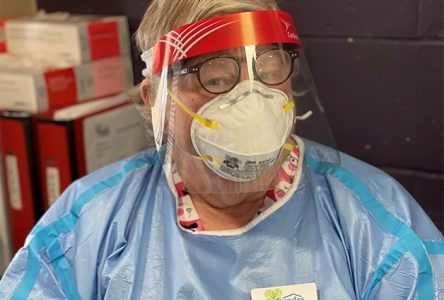The days of the Cold War are long behind us – thank god. But when the United States and the Soviet Union had their massive nuclear arsenals on a hair-trigger, Cornwall would have likely been on the front lines when the casualties were counted.
The reason? There was once a warhead in the Soviet stockpile of 30,000 weapons that had Cornwall’s name on it.
We know this because Canada’s Cold War museum, the Diefenbunker in Carp, northwest of Ottawa, has maintained the last simulation (or wargame) to be run at the facility. The simulation notes that on Jan. 6, 1983 at exactly 3:01 p.m., a nuclear weapon was exploded in the city as part of a massive, simulated, attack against Canada.
Had the simulation been reality, Cornwall would have been wiped from the map – one of the first, if not the first target the Russians chose, according to the simulation.
Dave Peters, a retired colonel with the Canadian Armed Forces, who went on to head up the nation’s civil defense readiness before retiring for good in the late 1990s, now sits as a member of the Diefenbunker’s board of directors.
He said the weapon used in Cornwall would have targeted the dam at the R.H. Saunders Generating Station, as well as the bridges that link us to the United States.
The power of the weapon would have been so strong that people living in the Riverdale neighbourhood wouldn’t have even known the bomb had exploded before they were killed.
“You wouldn’t have even seen the flash,” he said. “We used to run those exercises every December.
“We weren’t practising to see who would win. We wanted to make sure our machinery (at the bunker) was working properly.”
The Diefenbunker was a hardened underground facility that was built to house the upper echelons of the Canadian government in the event of nuclear war. It was built in the 1959 as a four-level bomb shelter complete with broadcast facilities for the CBC and enough food and water for more than 500 to survive for weeks at a time.
It was decommissioned in 1994 and designated a national historic site. Now it operates as a museum.
“NORAD would feed us targets” during simulations, said Peters, referring to the North American Aerospace Defense Command, a joint military venture between the U.S. and Canada. “It was our job to maintain communications and evaluate damage and casualties.”
During the Cold War, or if strategic hostilities were to break out now between Russia and the U.S., Cornwall could still find itself in the crosshairs.
“It’s an important target. There’s the dam and the Seaway locks,” said Peters. “It would do economic damage to the U.S. and Canada.”
During the Cold War Cornwall was also the site of what were known as central relocation units – essentially the basements of federally-owned buildings that were converted into fallout shelters for other, less-important members of the federal government.
Cornwall, and five other municipalities in eastern Ontario, held such facilities. Ours was located in the basement of what is now the Cornwall Public Library, but then Canada Post.
Peters, who was head of the nation’s civil defense preparedness at the time, said while the idea of a fallout shelter in Cornwall looked nice on paper, reality is another thing altogether.
“It was the worst of them all,” he said of the Cornwall shelter, adding there were basement windows that were never covered up and would have made the shelter useless in the event of an attack.
“They told me they would get some plywood and cover the windows and then cover that with dirt,” said Peters, adding that would have never worked, had an attack really occured. “Do you know how much time you have in that case?”
Today the Diefenbunker in Carp is one of the last such facilities in the country. Every year several thousand people pass through its massive blast doors to see what it would have been like for Canadian VIPs to ride out an attack against the country.
It has even become moderately famous in Hollywood. Scenes for the Ben Affleck blockbuster ‘The Sum of All Fears’ were filmed at the facility.
For more on the bunker, named after former Canadian Prime Minister John Diefenbaker, check out diefenbunker.ca. And for a slideshow of images from the bunker, check out our homepage.



